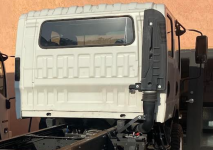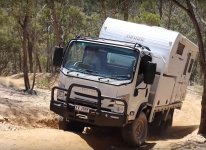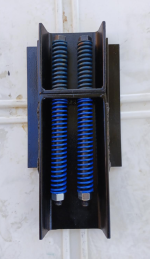I'm not 100% sure of your figures as mathematics is my weakest subject, plus my NPS has a shorter wheelbase (medium) in Isuzu land.
Sometimes what you work out on paper is fine, but sometimes there is, or there can be, an exception. No doubt you will find this out as did a close friend who has done something very similar to your proposal, but on a European truck. His remedy was to lift his camper by about 30mm from memory by using spacers of some kind; it did work and after about 8 years, it's still running well.
Attached is something you may have seen before, this is my NPS with the front and rear axles running right to their limit, but in opposite directions, thereby inducing chassis rail twist. My tray is attached to the chassis rails in a very similar fashion to your set-up, as you can see, the cabin is twisting in tune with the front of the chassis rails, while the tray, containing the bolted on camper, is more in tune with the rear section of the chassis rails.
Our suspension set-up allows the live axles to swing in a 600mm arc from the very top to the very bottom of the arc. Looking at the cabin in relation to the camper it does appear that your calculations may be pretty good, but do remember I have a shorter wheelbase and therefore shorter chassis rails, at least I think my chassis rails are shorter as I cannot remember what your base truck is.
Mick.
View attachment 886059







